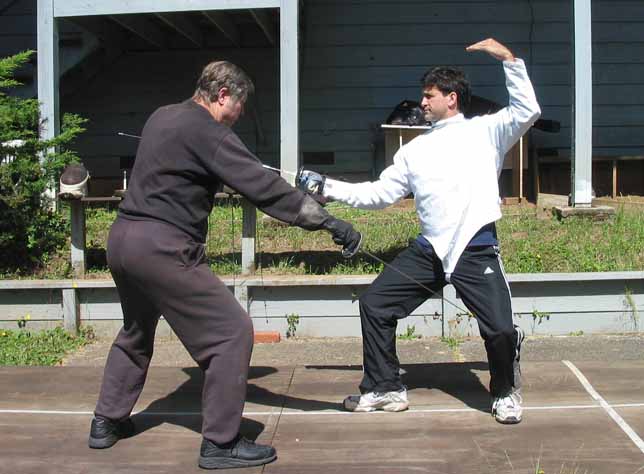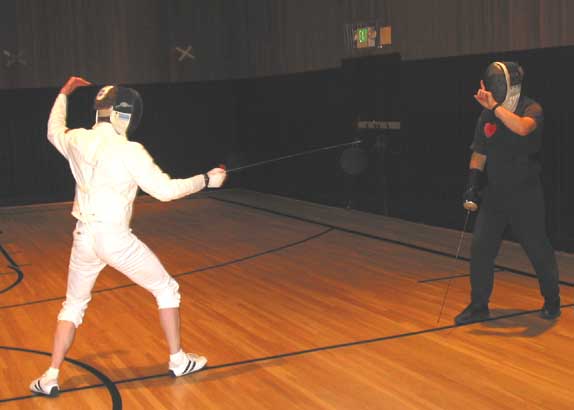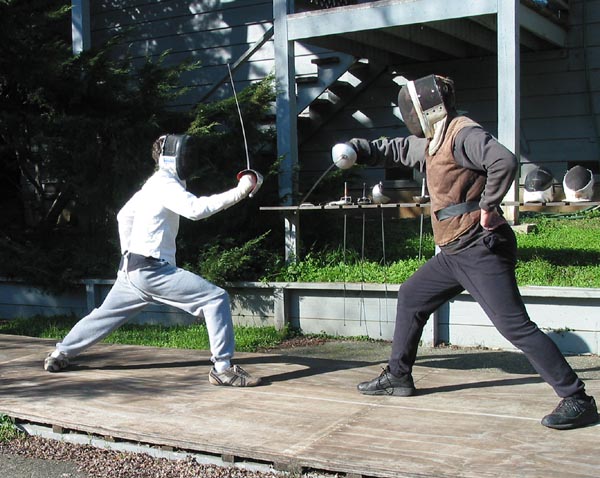What Kind of Fencing Lesson is Right for You?
The Group Lesson
Historically, there are two methods of fencing instruction. Of these it is the "group lesson" with which newcomers who register for what is commonly advertized as a "fencing class" are mostly familiar. In this method of teaching, instruction is delivered simultaneously to a group of students who, under the direction of a teacher work in pairs and alternately assume the roles of "attacker" and "defender." After demonstrating some element of fencing technique the instructor directs his or her students to imitate the example until the technique is executed correctly.
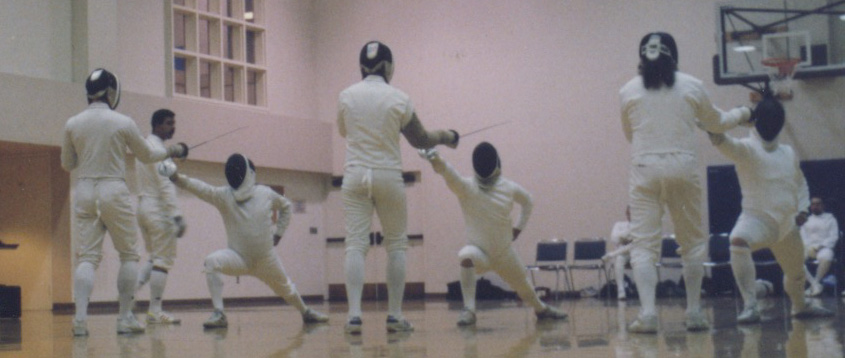
While the "group" fencing lesson is typically used to train novices by many fencing clubs in the United States, this method of teaching is far better suited to advanced fencers, such as those shown above.
The Individual Lesson
The traditional method of fencing instruction employed by the fencing masters of Western Europe during that time in history when fencing was serious business is the individual, or "one-on-one" fencing lesson. Lessons such these are comparable in many ways to those given by a piano teacher. However, unlike a music lesson, the individual fencing lesson requires the teacher to interact physically with the pupil.
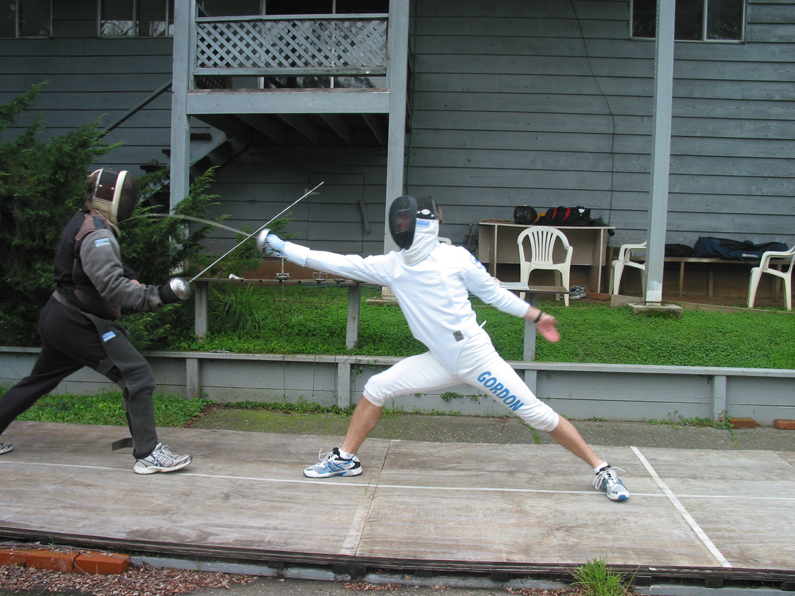
Advanced, individual lesson with vigorous, one-on-one interaction between teacher and pupil.
For a representative example of a fencing lesson (saber) please visit:
http://www.youtube.com/watch?v=fzv7d97xqUE
Group vs. Individual Fencing Lessons: Comparison and Contrast
Group Lessons
For the newcomer to fencing, group lessons should be the choice of last resort for a number of reasons.
First: Consider a group lesson such as the one seen in the example below. In this method of teaching, each student can get only a fraction of the instructor's attention.
Watching the students on his far left, this teacher cannot see the other fencers behind him. In group lessons for beginners, much gets missed.
Second: In a group lesson every student's progress depends to a considerable degree upon the native aptitude of his or her partner. A partner with no natural ability will be unable to adequately play his or her role in the exchange of thrust and parry. Consequently, progress will be hindered, even if partners rotate from pair to pair.
Third: In any given group of newcomers there will be some students for whom progress proves difficult. In the beginning, these tend to dominate the instructor's attention at the expense of everyone else in the class. Still others who come with natural ability learn far more quickly. Eventually, the gifted students are often singled out and given more attention than the others because they show promise as new, long-term members of the fencing club. Remaining fencers who might well have developed further from a more attentive teacher are highly likely to drop out, never to return.
Fourth: Yet another disadvantage posed by the group lesson is the often surprising lack of actual fencing instruction. When enrolling in a fencing class one naturally expects to receive instruction for the full duration of each session, which usually runs around sixty minutes. However, to warm up and to develop and maintain physical fitness, pupils are put through a series of callisthenic exercises. After the callesthenics, they are then given a series of "footwork drills" to perform. The amount of time spent on these workouts typically ranges from 15 to 20 minutes — which means that the hour of actual fencing instruction one expects is reduced to only 40 or 45 minutes. Callisthenics and footwork drills are certainly necessary, but these exercises do not require an instructor; students can do them on their own! When incorporated in the group lesson, these exercises are a waste of the student's precious time.
Individual Lessons
Pace
From the moment a fencing master calls his pupil to the guard, the student's posture, speed, timing, measure and technique all fall under scrutiny. As the lesson unfolds the pupil is methodically led through a series of logically-ordered steps, each of which relates directly to what came before and what will follow. As each new step is presented, it is practiced until it can be executed with a reasonable degree of proficiency. As a consequence, the lesson's pace is set solely by the student.
Undivided Attention
As a novice's skills develop, the fencing master formulates tailor-made lessons that not only reinforce, but also build directly upon what his student has mastered previously. Receiving the instructor's undivided attention, the student's progress will be much more rapid than it would be in a "fencing class," or group lesson. Pupils eventually establish a bond with their instructor who instills confidence and patiently guides them through the vast body of theory and technique that, once mastered, will transform the rank beginner into an accomplished fencer.
Cost
While group lessons generally cost half that of an individual lesson, those benefitting most from group lessons, from an economic point of view, are not students, but instructors who stand to draw the same revenue from a single hour's work that normally would require anywhere from three to six hours — or more. Individual lessons may cost more, but because the student receives the instructor's undivided attention and benefits from his experience, pedagogical expertise, and highly developed technical skill, the rate of learning is much faster — and less expensive in the long run.
